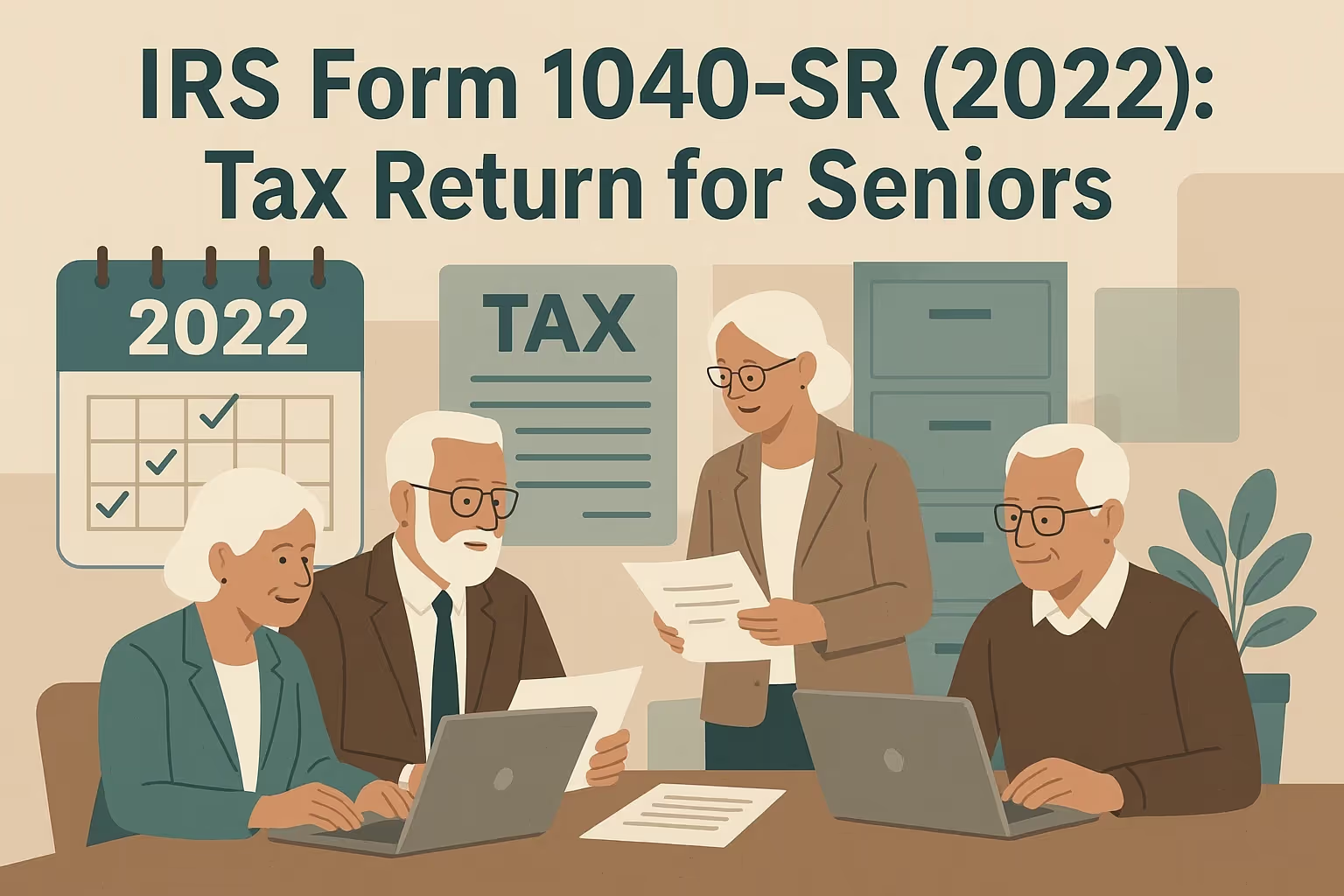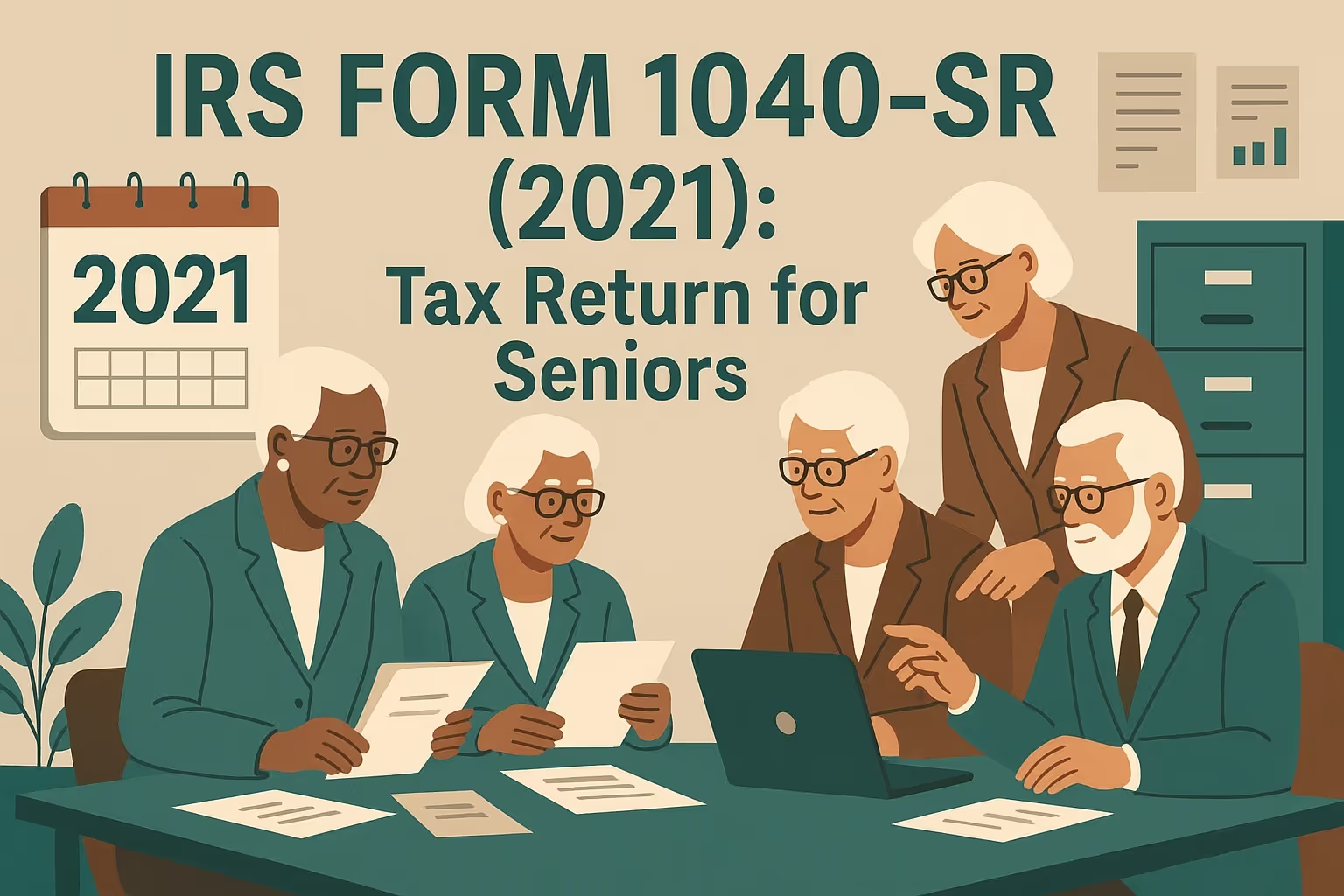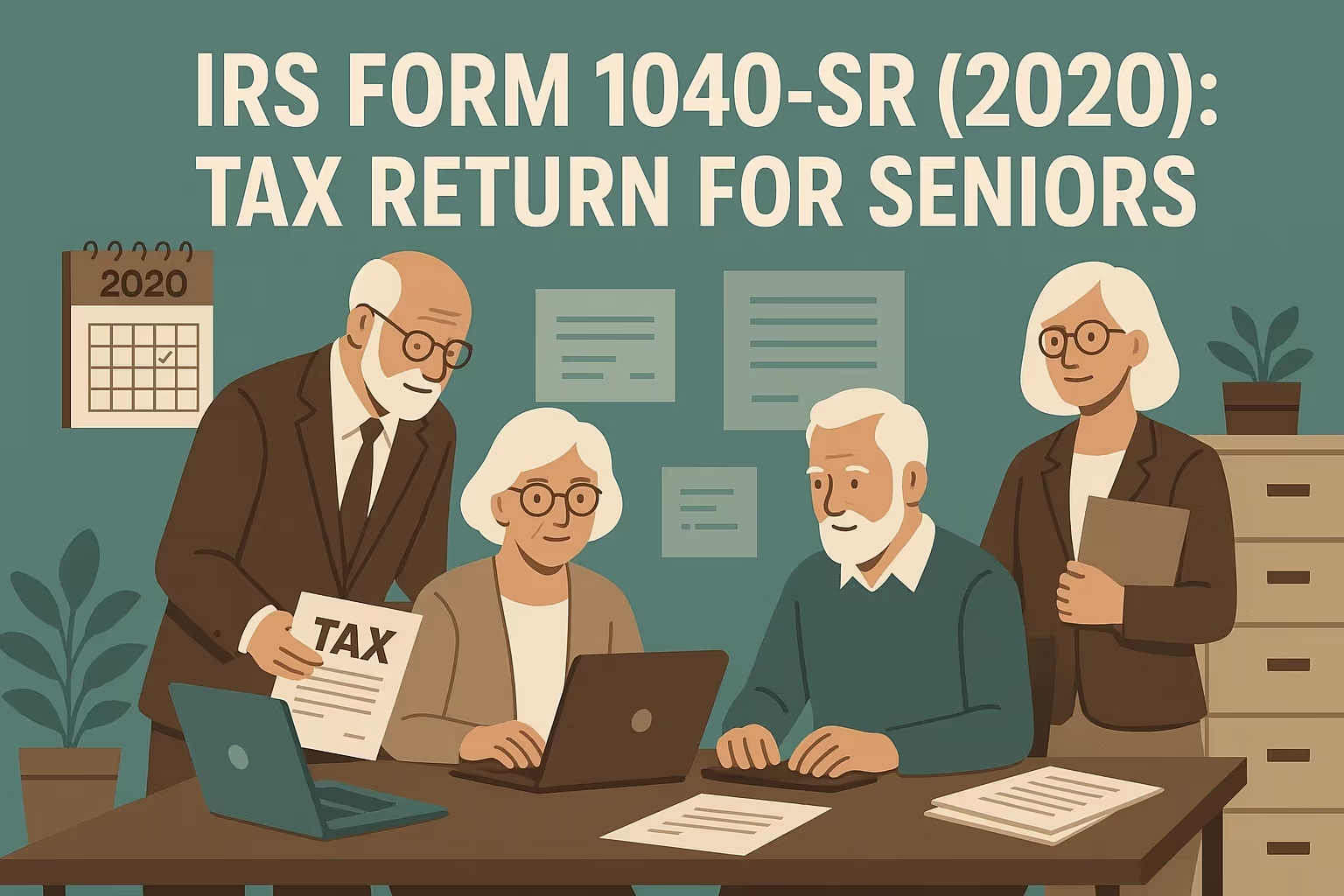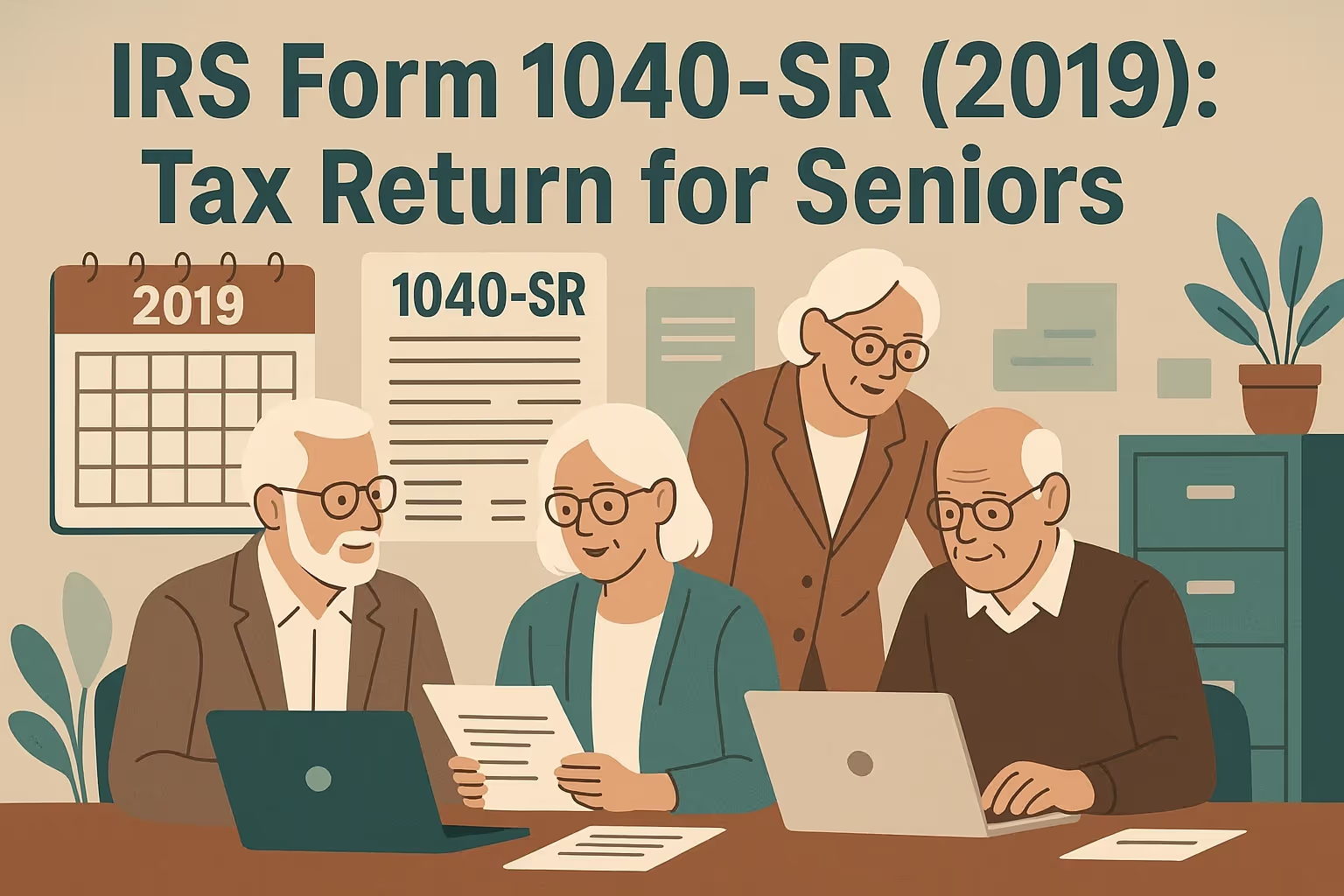Form 1040SR 2017 Instructions: Complete Guide For Seniors
Filing a tax return for 2017 required seniors to use the same schedules and forms as all other taxpayers. The IRS had not yet released Form 1040SR, so older taxpayers followed standard tax filing rules. Seniors must carefully choose a filing status, gather their documents, and follow official instructions to ensure accuracy and timely submission.
Many seniors prepared their taxes online using the Internal Revenue Service website or professional tax software. These tools helped taxpayers complete forms, calculate deductions, and file directly with accuracy. Seniors who preferred paper filing could still send returns by mail, though refunds often took weeks. E-file options offered an easy way to speed up the process.
For seniors unfamiliar with filing, expert help was often helpful. A tax expert could answer questions, review documents, and provide guidance to help taxpayers qualify for credits or deductions. This expert helped ensure taxpayers received the maximum refund or reduced the amount they might owe. Using available service options made the tax filing experience simpler and more reliable.
Overview of IRS Form 1040
The IRS did not release Form 1040SR until 2019, so taxpayers age 65 or older filed their 2017 tax return using Form 1040, Form 1040A, or Form 1040EZ. Each version served different filing needs, depending on income sources, deductions, and filing status. Seniors had to carefully read IRS instructions to choose the right form for their situation.
Forms Available in 2017
- Form 1040 was the complete income tax form for taxpayers with multiple income sources, detailed deductions, or complex schedules. It required more information but ensured accuracy.
- Form 1040A: A simplified option for taxpayers with less than $100,000 in income. It used the same schedules but limited certain deductions and credits.
- Form 1040EZ: This was the simplest version, available only for those with basic income and no dependents. Seniors rarely qualified because of their retirement income.
Senior-Specific Benefits in 2017
- Higher standard deduction: Older taxpayers received an increased standard deduction, lowering their taxable income and reducing the amount they needed to pay on their return.
- Credit for the Elderly or Disabled: Seniors could qualify for this valuable credit if their income stayed below IRS limits, directly reducing their total income tax owed.
- Social Security taxation: Portions of Social Security were not taxable depending on the combined income. This rule helped older taxpayers keep more money from their benefits.
- Required minimum distributions: Seniors aged 70½ or older had to begin mandatory withdrawals from retirement accounts and report them properly to avoid penalties on their tax filings.
Official IRS Resources
- IRS website: Provided complete instructions, forms, and schedules for 2017 tax filing, allowing taxpayers to find updated information quickly and directly.
- Publication 554, The Tax Guide for Seniors, explained the rules for older taxpayers, including credits, deductions, and retirement income.
- Publication 501: Outlined exemptions, filing status guidance, and standard deduction amounts. It helped seniors prepare their return with confidence and accuracy.
Tax Return Changes for the 2017 Tax Year
The 2017 tax year included several updates affecting older taxpayers. These changes influenced deductions, filing deadlines, and credit eligibility. Seniors must carefully read IRS instructions and prepare their tax returns accurately to avoid mistakes. Understanding these updates helped taxpayers file correctly, pay the right amount, and maximize any refund owed by the IRS.
Standard Deduction Adjustments
- Increased amounts: For 2017, the IRS raised standard deductions, offering more money back to seniors filing their tax return and lowering taxable income.
- Additional senior benefit: Older taxpayers filing single received an extra $1,550 deduction, while married couples filing jointly received $1,250 each to reduce income tax owed.
Filing Deadline Adjustment
- Extended deadline: The usual April 15 deadline shifted to April 17, 2018. Seniors gained additional time to complete tax filing and submit forms.
- The change is due to Emancipation Day in Washington, D.C., which caused the federal government to move the tax return deadline for all taxpayers nationwide.
Medical Expense Deduction Rule
- Lower threshold: Seniors could deduct medical expenses above 7.5% of adjusted gross income, instead of the usual 10%, offering older taxpayers greater relief.
- Helpful for seniors: This rule acknowledged high medical costs among retirees, allowing larger deductions and improving chances of receiving a higher refund from the IRS.
Exemption and Deduction Phaseouts
- Income-based limits: Exemptions and deductions were phased out for higher-income taxpayers, reducing benefits. Seniors with substantial retirement income need to calculate carefully when filing.
- Complex process: Seniors often require expert help or IRS guidance to determine how these phaseouts apply to their return and adjusted taxable income amounts.
Extended Tax Benefits
- Education deductions: Tuition and fees deductions remained available, providing relief to taxpayers who supported continuing education, even while filing their 2017 tax return.
- Housing-related relief: Seniors paying mortgage interest or insurance premiums benefited from extended deductions, helping reduce overall income tax liability for the year.
Step-by-Step Income Tax Filing Instructions
An organized approach is necessary to complete a tax return correctly. The steps below outline the process seniors were required to follow in 2017.
Step 1: Gather Personal Information
Begin your tax filing by collecting essential details such as your name, Social Security number, and mailing address. Seniors must also choose the correct filing status, which affects deductions and refund eligibility. Confirm all information against official documents to ensure accuracy, because errors here can delay processing or jeopardize the money you may owe or receive.
Step 2: Review Exemptions
For 2017, each exemption reduced taxable income by $4,050, directly lowering your tax return amount. Seniors filing jointly claimed one exemption for each spouse, while dependents added more. High earners faced exemption phaseouts, so using the IRS website or software was helpful. Complete this section carefully, since missing exemptions could prevent you from getting the maximum refund possible.
Step 3: Report All Income
Report income from wages, Social Security, pensions, IRA distributions, or investment interest. Retirement distributions required accurate reporting to avoid penalties. Some Social Security benefits remained untaxed, depending on combined income. Using e-file systems or the IRS website simplifies calculations. Ensure every income source is listed, since the IRS compares your tax filing against employer and financial institution forms received.
Step 4: Apply Adjustments to Income
Seniors could apply adjustments such as IRA deductions, student loan interest, or penalties for early withdrawals. These lowered adjusted gross income and potentially improved refund amounts. Correctly entering these items required reading IRS instructions or contacting a tax expert for guidance. Filing software also provided helpful step prompts, ensuring taxpayers claimed every adjustment they qualified for during tax filing.
Step 5: Select Standard or Itemized Deductions
Older taxpayers often benefited from the higher standard deduction, but itemizing deductions sometimes provided greater savings. Expenses such as medical costs, mortgage interest, or charitable donations could significantly reduce taxable income. Seniors needed to prepare supporting documents for itemized deductions carefully. Whether standard or itemized, deductions played an important role in reducing taxes owed and maximizing the refund received.
How to File Your Tax Return
Once all required forms and schedules are complete, the next task is selecting an appropriate filing method. The IRS provided multiple options in 2017.
Electronic Filing Options
- IRS Free File: Taxpayers with incomes below set limits could e-file for free through the IRS website, gaining speed and accuracy and securing online submission directly.
- Free Fillable Forms: Higher-income seniors could still use free IRS-provided forms. These required careful entry but allowed easy online filing with complete accuracy.
Senior-Friendly E-File Benefits
E-filing made tax filing simpler for older taxpayers. It reduced mistakes, provided instant acknowledgment of receipt, and helped refunds arrive in weeks instead of months. Filing online with a trusted device gave seniors an easy way to upload documents, track progress, and send information directly. Seniors filing taxes online gained both convenience and accuracy.
Paper Filing Instructions
Some seniors still preferred paper tax filing, mailing returns directly to the IRS. Seniors had to sign forms carefully, include all schedules, and attach payment vouchers if they owed money. Certified mail offered proof of delivery, while copies of complete documents were important for recordkeeping. Paper filing worked, though refunds generally took more time.
Free Tax Preparation Help
- VITA and TCE: Free services that helped seniors prepare their tax returns. They offered step-by-step guidance, answered questions, and ensured returns were filed accurately.
- AARP Tax-Aide is focused on older taxpayers needing expert help at no cost. Seniors can find local locations today and receive simple, professional tax filing services.
Payment Instructions for 2017
After filing, seniors needed to ensure any taxes owed were paid on time. In 2017 the IRS offered several secure payment methods, including electronic and traditional options. Seniors also had to account for estimated tax obligations, extensions, and withholding adjustments, especially when retirement income or Social Security benefits created unexpected tax liability.
Payment Deadline
Tax payments for 2017 were due April 17, 2018. The extended date resulted from the Emancipation Day holiday. Seniors needed to pay by the deadline to avoid penalties and interest. Filing an extension did not extend the time to pay. Even when filing an extension, payment still had to be made on time to the IRS.
Electronic Payment Options
- Direct Pay: Allowed taxpayers to pay directly from a bank account without fees, offering secure submission through the IRS website for maximum accuracy and convenience.
- EFTPS: The Electronic Federal Tax Payment System gave seniors free, reliable service to schedule and send federal tax payments securely online using any registered device.
- Card payments: Seniors could pay taxes using a credit or debit card. This option incurred processing fees but allowed flexible payment directly through authorized providers.
Traditional Payment Methods
- Check or money order: Payments could be mailed with Form 1040-V. Seniors were required to make checks payable to the United States Treasury for accuracy.
- Cash payments: Permitted at participating retail partners, this option helps seniors without bank accounts complete their payment obligations on time.
Estimated Tax Payments
Many seniors needed estimated payments if withholding was insufficient. These quarterly payments helped avoid penalties and balanced retirement distributions, pension income, or Social Security withholding. Failing to make timely payments could result in additional charges. Using the IRS website, seniors could prepare and send estimated payments directly with accuracy and acknowledgment of receipt.
Extensions
Seniors could request an automatic extension using Form 4868. This provided six extra months to file their tax return, but did not extend payment deadlines. Any unpaid balance still had to be submitted by April 17, 2018. Seniors who missed the deadline risked penalties, so accurate estimates and timely payments remained essential even when filing later.
Required Schedules and Other Forms
Along with Form 1040, seniors must include schedules or supporting forms. These attachments documented credits, deductions, and income sources, ensuring the tax return was complete. Seniors had to carefully select the right schedules, prepare them accurately, and send them with the main return. Missing attachments could delay refunds or increase the chance of IRS questions.
Schedule R: Credit for the Elderly or Disabled
- Eligibility: Seniors 65 or older or younger individuals with permanent disabilities could qualify for this valuable credit to reduce their overall income tax owed.
- Income limits: Credits are phased out at certain income levels. Seniors must carefully calculate eligibility using IRS instructions, often requiring expert help to ensure complete accuracy.
Schedule A: Itemized Deductions
- Medical expenses: Older taxpayers with significant medical or dental costs could itemize and deduct these expenses if they exceeded the adjusted gross income threshold.
- Other deductions: Seniors could also deduct mortgage interest, state taxes, or charitable contributions. Documentation had to be thorough to receive the maximum deduction value.
Schedule B: Interest and Dividends
- Interest reporting: This is required when taxable interest exceeds $1,500. Seniors with retirement savings or investments often need this schedule to report accurately.
- Dividend income: Seniors with dividend income over $1,500 or foreign accounts had to file Schedule B, ensuring proper acknowledgment of all financial activity.
Schedule D: Capital Gains and Losses
- Asset sales: This is required for reporting stock, bond, or property sales. Seniors with investment activity had to calculate gains and losses precisely.
- IRS review: Missing Schedule D often triggered IRS questions. Seniors were encouraged to use software or expert help to prepare this schedule correctly.
Other Relevant Forms
- Form 8606: Required for nondeductible IRA contributions or conversions. Seniors with retirement planning activities had to file this to ensure complete records.
- IRS calculations: In some cases, seniors could request that the IRS calculate credits like the elderly or disabled credit, simplifying the filing process.
Common Mistakes to Avoid
Filing errors often caused delays, reduced refunds, or created penalties for seniors completing their 2017 tax return. Reviewing common mistakes before submission helped ensure accuracy. Seniors who carefully checked entries and confirmed all schedules were attached were more likely to avoid IRS notices, late fees, or missed deduction opportunities.
Senior-Specific Filing Errors
- Social Security reporting: Many seniors miscalculated taxable benefits. Using worksheets from the IRS website ensured accuracy, preventing excess tax or reduced refund amounts.
- IRA distributions: Required distributions were often overlooked or incorrectly reported. Seniors needed to include these amounts to avoid penalties and maintain compliance.
- Missed standard deduction increases: Some older taxpayers failed to claim the additional standard deduction, losing money they qualified for and potentially increasing taxes unnecessarily.
- Schedule R credit errors: Mistakes included misjudging income limits or missing documentation. Seniors benefited from expert help when calculating eligibility for this credit.
General Filing Mistakes
- Wrong Social Security numbers: Errors delayed processing and refunds. Seniors had to copy information directly from their Social Security cards to ensure accuracy.
- Math mistakes: Manual calculations often led to errors. Using e-file software or expert help reduced this risk and ensured correct tax computations.
- Incorrect filing status: Choosing the wrong filing status affected deductions and refund eligibility. Seniors had to review the instructions carefully to select the correct status.
- Missing signatures: Unsigned returns were invalid. Seniors needed to sign paper forms and acknowledge electronic submissions to complete the filing process properly.
Before-Filing Checklist
- Verify calculations: Double-check math and income totals using IRS instructions or tax software. Accurate figures ensured correct refunds or proper payment amounts.
- Attach schedules: Seniors had to include all required schedules. Missing forms caused IRS delays, questions, and possible reductions in refund amounts.
- Keep copies: Seniors should keep signed copies and supporting documents. These records helped answer IRS questions and prepare future returns.
First-Time Senior Filer Tips
Seniors filing a tax return for the first time after retirement faced new responsibilities. Understanding retirement income rules, gathering the correct documents, and following IRS instructions carefully helped avoid mistakes. Planning also reduced stress and provided more accuracy, ensuring seniors could prepare returns confidently and secure the refund or payment outcome required.
Transitioning to Retirement Filing
Seniors have different income sources compared to their employment years. Retirement income, Social Security benefits, and investment earnings must be reported correctly. Filing status also sometimes changes, requiring seniors to review instructions carefully. Filing taxes after retirement requires adjusting to these differences and finding the most effective way to meet IRS requirements.
Retirement Income Taxation
- Fully taxable: Traditional IRA distributions, pensions, 401(k) withdrawals, wages, and interest were subject to income tax, requiring careful inclusion on Form 1040.
- Partially taxable: Social Security benefits might be taxed depending on combined income. Seniors needed to calculate taxable portions accurately to avoid IRS questions or penalties.
- Non-taxable: Roth IRA withdrawals and municipal bond interest were generally exempt. Understanding which income sources required reporting and which did not has benefited seniors.
Key Documents to Gather
- Income docs: Forms W-2, 1099-R, 1099-SSA, 1099-INT, and 1099-DIV were essential. Seniors had to collect all employer, Social Security, and investment documents.
- Deduction docs: Mortgage interest statements, property tax bills, medical expense receipts, and charitable donation records supported itemized deductions where applicable.
- Other documents: Previous-year returns, IRA contribution records, and estimated tax payment receipts were needed for accuracy and complete recordkeeping.
Required Minimum Distributions
Seniors age 70½ or older were required to take minimum distributions from retirement accounts. Missing these withdrawals led to steep IRS penalties. Seniors must confirm correct amounts, withdraw on time, and report accurately. Understanding these rules helped prevent unnecessary costs and ensured compliance with IRS retirement income requirements during tax filing.
Planning for Future Years
Careful planning made future tax filing easier. Seniors benefited from adjusting withholding, tracking deductible expenses, and considering the timing of Social Security benefits. Keeping records throughout the year reduced stress at filing time. Seniors who planned carefully avoided mistakes and positioned themselves for accurate, timely tax returns each year.
When to Seek Professional Help
Some seniors required expert help due to complex returns. Situations involving multiple income streams, significant retirement distributions, or estate planning required a tax expert. Contacting a professional provided reliable guidance, helped seniors prepare accurately, and reduced the risk of costly errors. Seniors gained peace of mind by choosing expert support when necessary.
Frequently Asked Questions
Do I need to file a tax return if I only received Social Security benefits?
It depends on total income. If Social Security were your only income and remained under $25,000 for single filers or $32,000 for married couples filing jointly, filing may not have been required. However, seniors who withheld taxes were encouraged to file for a refund of amounts already paid to the IRS.
How do I know if my Social Security benefits were taxable in 2017?
Taxability depended on combined income, which included adjusted gross income, nontaxable interest, and half of Social Security benefits. If the combined income exceeded $25,000 for single filers or $32,000 for joint filers, up to 85% of benefits could be taxed. Seniors had to use IRS worksheets or tax software to ensure proper calculation.
What additional standard deduction applied to seniors in 2017?
Seniors received an additional standard deduction that reduced their taxable income. In 2017, single or head-of-household taxpayers received an extra $1,550, while married filers received $1,250 each. Seniors born before January 2, 1953, automatically qualify. Claiming this deduction was important for maximizing refund eligibility and ensuring accuracy in the tax filing process.
Who qualified for the Credit for the Elderly or Disabled?
Eligibility requires being 65 or older or permanently disabled with taxable disability income. Seniors also had to meet IRS income limits, which varied by filing status. This credit directly reduced the amount of tax owed. Seniors used Schedule R with their tax return to claim the credit, ensuring compliance with IRS filing requirements.
When did seniors have to begin taking required minimum distributions?
Seniors had to start required minimum distributions from retirement accounts by April 1 of the year after they turned 70½. For example, anyone who reached that age in 2017 had until April 1, 2018, to take the first distribution. Missing this deadline resulted in severe penalties, often amounting to half the distribution.
Could seniors contribute to IRAs in 2017 after age 70½?
Traditional IRA contributions were not allowed after age 70½ in 2017. Seniors with earned income, however, could contribute to a Roth IRA at any age. This allowed them to save money tax-free if they qualified. Seniors must carefully follow IRS instructions to confirm eligibility and avoid mistakes when preparing annual returns.
What medical expenses were deductible for seniors in 2017?
Qualified medical and dental expenses exceeding 7.5% of adjusted gross income were deductible. Seniors could include prescription medications, insurance premiums, medical equipment, and long-term care expenses. Accurate recordkeeping and receipts were essential for supporting deductions. This lower threshold made tax filing more favorable for older taxpayers with significant yearly healthcare costs.


















